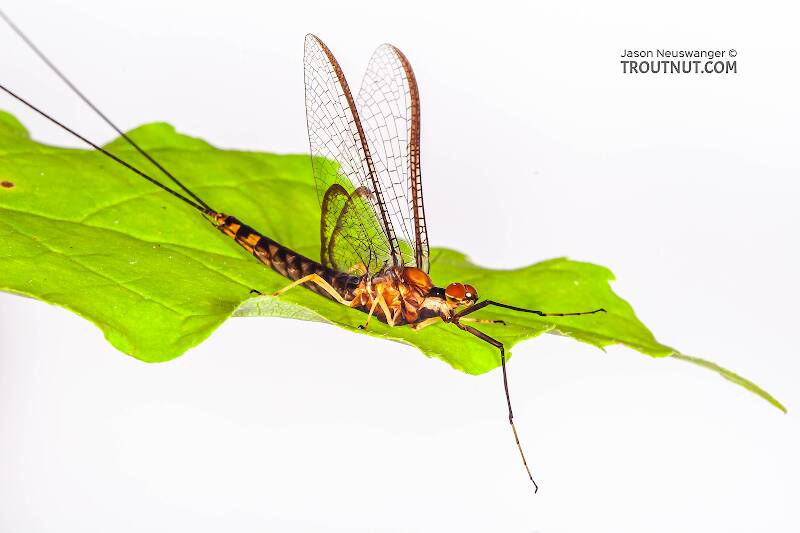
Salmonflies
Pteronarcys californica
The giant Salmonflies of the Western mountains are legendary for their proclivity to elicit consistent dry-fly action and ferocious strikes.
Featured on the forum

I caught this tiny larva without a case, but it seems to key pretty clearly to to Glossosomatidae. From there, the lack of sclerites on the mesonotum points to either Glossosoma or Anagapetus. Although it's difficult to see in a 2D image from the microscope, it's pretty clear in the live 3D view that the pronotum is only excised about 1/3 of its length to accommodate the forecoxa, not 2/3, which points to Glossosoma at Couplet 5 of the Key to Genera of Glossosomatidae Larvae.

Troutnut is a project started in 2003 by salmonid ecologist Jason "Troutnut" Neuswanger to help anglers and
fly tyers unabashedly embrace the entomological side of the sport. Learn more about Troutnut or
support the project for an enhanced experience here.
Fishcraze
Posts: 1
Posts: 1
Fishcraze on May 27, 2009May 27th, 2009, 6:13 am EDT
I know in North Alabama these flies usually hatch in Jun. What climate/water temperatures are required for hatching? Does it normally have to be dry/no rain for a week?
Thanks to anyone who can answer these questions. I promised my 12 year old, I was going to take him this year and I'm trying to plan my leave at the closest possible time.
Fishcraze
Thanks to anyone who can answer these questions. I promised my 12 year old, I was going to take him this year and I'm trying to plan my leave at the closest possible time.
Fishcraze
GONZO on May 27, 2009May 27th, 2009, 6:51 am EDT
Fishcraze,
Assuming that you are referring to Hexagenia hatches and not mayflies in general, the Hex hatches are typically quite lengthy--often lasting a month or more. You should not have too much trouble timing the hatch. Cooler than normal long-term weather patterns might delay the onset the hatching period a bit, and warmer than normal weather might accelerate it. Daily weather during the hatching period will influence the concentration and quality of the hatch. I find that the heaviest Hexagenia hatches usually occur on fairly hot days, but the sparser hatches on cooler, overcast days sometimes provide more time to fish. The concentrated, explosive hatches that often occur on warm evenings happen around (or after) dark and can be over in half an hour.
Assuming that you are referring to Hexagenia hatches and not mayflies in general, the Hex hatches are typically quite lengthy--often lasting a month or more. You should not have too much trouble timing the hatch. Cooler than normal long-term weather patterns might delay the onset the hatching period a bit, and warmer than normal weather might accelerate it. Daily weather during the hatching period will influence the concentration and quality of the hatch. I find that the heaviest Hexagenia hatches usually occur on fairly hot days, but the sparser hatches on cooler, overcast days sometimes provide more time to fish. The concentrated, explosive hatches that often occur on warm evenings happen around (or after) dark and can be over in half an hour.
Trtklr on May 31, 2009May 31st, 2009, 7:12 am EDT
in june if its been "normal" weather i wait for a few hot, humid days and warm nights, then i know its time. this year with the global cooling thats been going on things are running 2-3 weeks behind.
I have seen nothing more beautiful than the sunrise on a cold stream.
Quick Reply
Related Discussions
Topic
Replies
Last Reply
8
May 26, 2007
by Greenghost
by Greenghost


